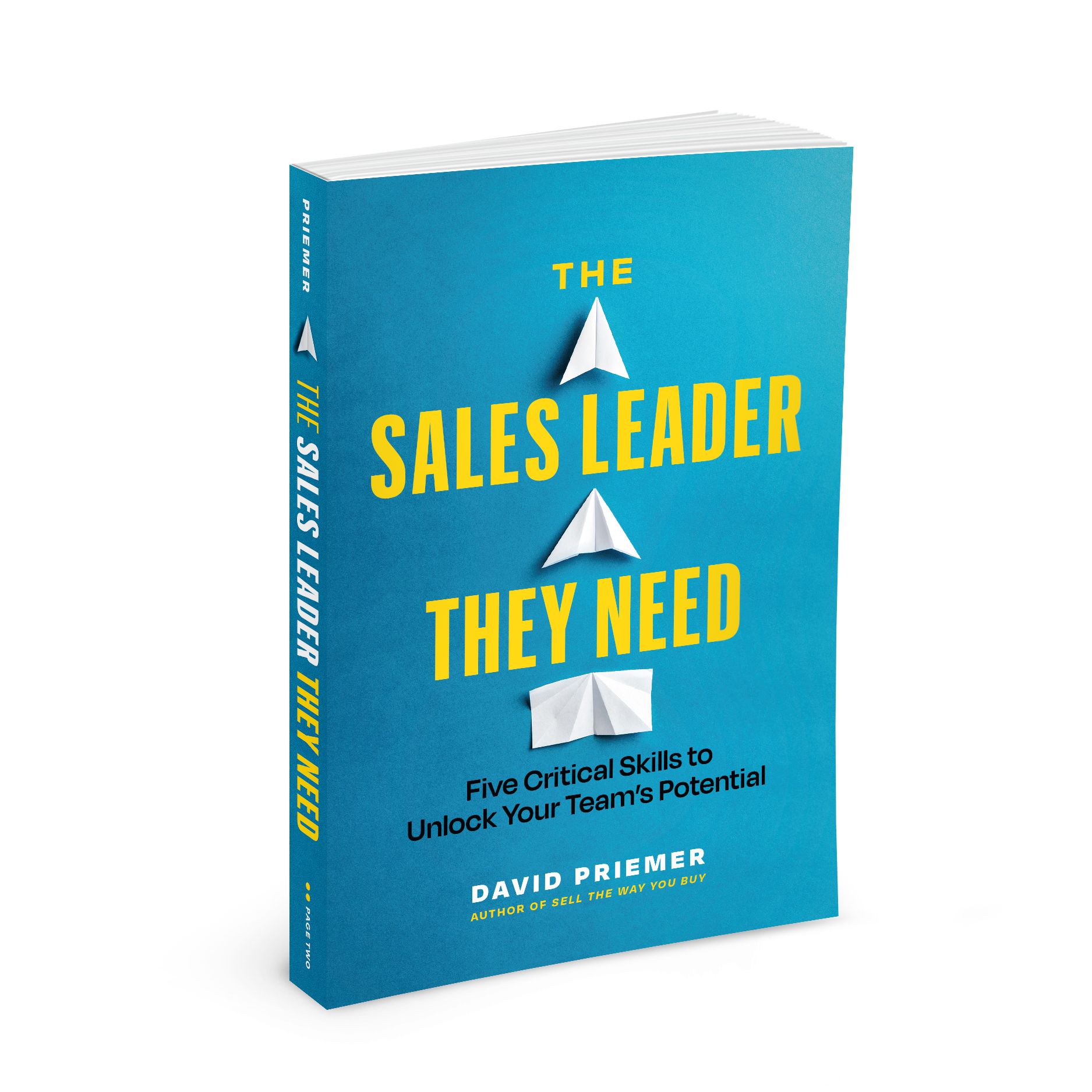Sell More by Losing Faster
In my last two VP of Sales roles, I found a surprising trend.
There was a high degree of correlation between my team’s win rates and the amount of time spent in the discovery phase of the sales cycle. In fact, the relationship across dozens of sales reps in different geographies was clear:
the more efficiently we moved a customer through the discovery phase, the greater our win rate.
In my last role specifically, I found that the time spent in the discovery phase for the deals we ended up losing to a competitor (or the status quo or “do nothing” option) was a whopping three times longer than the time spent in deals we ended winning! What’s more, the sales reps in the lower third in terms of time spent in the discovery phase of their sales cycles had 48 percent higher win rates.
This doesn’t mean that the secret to increasing your win rates is to rush customers through a hastily orchestrated discovery process. But these statistics did raise questions as to why this correlation existed.
Lessons Learned from Losing
Upon conducting further internal investigation with my reps, we found that the majority of the elongated discovery cycles in deals we ended up losing stemmed from a consistent set of reasons:
- Customer was elusive, “went dark,” or didn’t calls us back.
- Customer indicated interest but kept pushing out subsequent discovery conversations.
- Customer deferred to other stakeholders within their organization whom we couldn’t reach.
- Customer didn’t seem to understand or take interest in our value proposition.
On the flip side, many of the opportunities that progressed in due course did so briskly. Next steps were mutually agreed on and adhered to. Key stakeholders were engaged when needed.
In other words, customers who didn’t end up moving forward with us simply didn’t demonstrate the positive interest, responsiveness, and buying signals of those who did.
That made sense.
Could these results have been caused by poor execution or lack of persistence on the part of the rep in some cases? Absolutely. However, in almost all instances, the sales reps admitted to hanging on to deals they ended up losing for longer than they should have in the face of evidence to the contrary.
In short, if your sales motion is consistent, you’re engaging in the right behaviors, but still finding you’re spending too much time in the discovery phase of a given sales cycle, it could be a clear signal that you’re better off focusing your attention on better-fit opportunities.
This is especially true when selling during times of uncertainty!
While it might be tempting to cast the net wide and reel in every opportunity. Paradoxically, it’s better to narrow your team’s focus and go forensic, not far and wide. Look at your historical sales data, team performance, and really internalize which types of customers can get the most value from your solution during times like these. Then, double down on them (and yes, to the exclusion of others).
Related video: Stop Wasting Time on Bad Fit Customers!
After I had this very discussion with a client who provides network infrastructure software to managed IT service providers, one of their sales reps decided to embark on a ruthless pipeline cleanup. He cast off his “happy ears,” took an objective look at his book of business, identified the customers who were spending too long in discovery, and cut down his opportunity roster from 300 to 75. He focused on the opportunities that really mattered and reported back to me the very next month, completely amazed. “My results were instantaneous!” he said. “I focused my attention on buyers who showed higher degrees of initial intent, and the result: I hit 304 percent of my quota last month!” The trend continued into the subsequent months as well.
How to Stay on Track
The good news is that there are simple ways you can gain insight and visibility into how efficiently you are qualifying bad-fit customers out of your sales cycles and promote higher degrees of focus.
1. Figure out where YOU stand
All you have to do is…
- Login to your CRM
- Run a report that tells you how long you’re spending in the Discovery phase of sales cycles for deals you end up losing
- Run the same report for the deals you end up winning
- Calculate the ratio of those average time frames (i.e. #2/#3).
If the answer to #4 is greater than 1, move on to steps 2 and 3 below.
2. Add this counterintuitive statistic to your dashboard
While many leaders tend to measure the length of time it takes to win a deal, some are taking a counterintuitive but highly insightful approach to analyzing their “losing efficiency” as well.
One of my friends is a senior sales leader at e-commerce giant Shopify. She shared with me that, as part of their focus on sales execution and continuous improvement, they measure a statistic called “Time to Lose” or TTL. By incorporating statistical standards for how long an opportunity should be open before it either moves up or out of their sales pipeline, they are more easily able to maintain an objective view of the efficiency of their sales team.
3. Identify the offending behaviors and stamp them out!
As alluded to above, there are many cognitive biases that cause sales reps to spend more time losing deals than winning them. Among them, confirmation bias (AKA: “Happy Ears”) is one of the most prevalent. Confirmation bias is the tendency to search for, interpret, favor, and recall information in a way that confirms or strengthens one’s prior personal beliefs or hypotheses. For example, if a customer that showed good initial interest in your solution hasn’t returned your dozens of calls, you might assume that they are “just busy” and fully intend to respond soon. If you or your team members are struggling to look at your sales opportunities with objectivity, I’ve shared three counter-intuitive declarations you can make to your customer during the initial stages of the discovery process that will immediately help you find that much-needed resolve.
Discovery is arguably the most critical stage of any sales cycle. Besides the content and context we reap during this stage, the amount of time we spend in it can tell us a great deal about our probability of success later on. The key to ensuring you stay on track is using data to stay focused when happy ears and cognitive bias threaten to derail your sales cycle. This will not only preserve your precious bandwidth but ensure you have a cohort of wildly successful customers to advocate on your behalf.
We promise never to send you junk or share your email! Just helpful sales insights.














Leave a Reply
Want to join the discussion?Feel free to contribute!